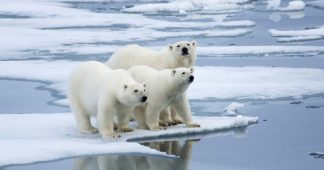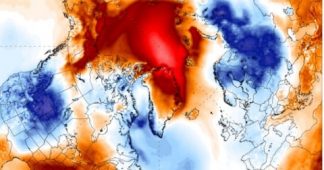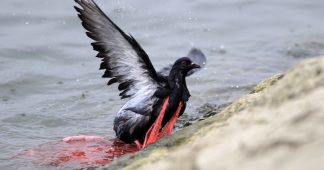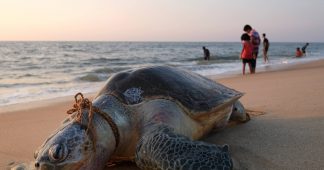27 November 2019
“Exceeding a certain percentage threshold means that the animals will begin to die,” warned the expert.
A quarter of what polar bears eat is made up of plastic waste, Russian scientist Ivan Mizin warned Tuesday as the animals are more frequently approaching human settlements due to the climate crisis.
“When polar bears visit landfills, up to 25 percent of their stomach and excrement contents is [made up of] various plastic waste: bags, wrappers, etc,” Mizin told Russian news agency Interfax.
The expert explained polar bears have been forced to forage for food on land as a result of the climate crisis and melting ice caps.
Russian scientists warned in a recent report that the decline in Arctic ice forces bears to abandon their habitat in search of food near populated areas to the point that in recent months several videos showing the animals wandering around Russian Arctic towns went viral.
In some cases, hungry bears had traveled hundreds of kilometers from their natural habitat searching for food.
“Polar bears rely heavily on the sea ice environment for traveling, hunting, mating, resting, and in some areas, maternal dens,” the World Wildlife Organization said in a report on the effect of the climate crisis on polar bears, adding that “in particular, they depend heavily on sea ice-dependent prey, such as ringed and bearded seals.”
A key concern among experts is that the long lifespans and low reproductive rates of the species will negatively affect their capacity to adapt to radical changes in their habitats.
Mizin warned birds and marine mammals that live in the Arctic were also found to have been consuming plastic. Although plastic debris is not as widespread as in the tropics, it has led to the death of marine mammals.
The scientist recalled a bowhead whale was found beached in the Arctic after it got tangled in fishing nets in 2015, a “first such finding, there’s no documented data of that happening before,” Mizin was quoted as saying.
While the WWF in its report called on governments to identify and protect key areas that could be viable for polar bears in the long term.
The wildlife organization also said that to safeguard a secure environment for both bears and Arctic communities, best management practices were needed to mitigate potential increased conflict between polar bears and humans.
Published at https://www.telesurenglish.net/news/Polar-Bears-in-Arctic-Forced-to-Feed-on-Plastic-20191127-0013.html











